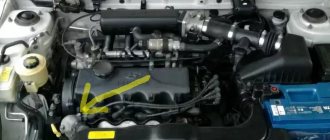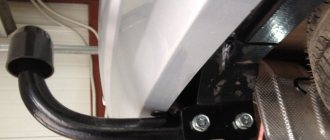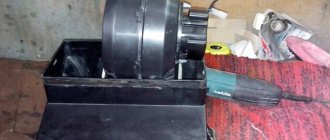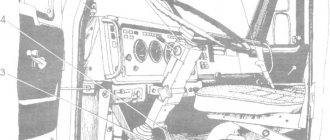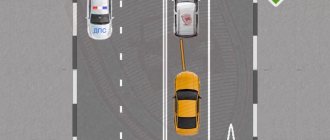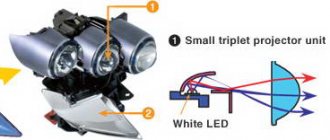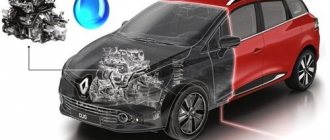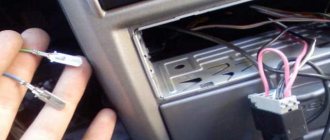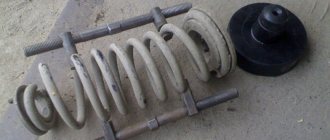Many drivers, especially those who do not have sufficient experience driving a car with a trailer, believe that this does not create any difficulties. However, this opinion is erroneous. To competently drive a car that is coupled to a trailer, special knowledge and practical skills are definitely required. Therefore, experts strongly recommend studying relevant tips that will help drivers in practice.
Preparing to drive a trailer
As in any important, responsible matter related to the operation of a car, before traveling with a trailer, you should carefully consider all its nuances. Psychological adjustment is important for the reason that such driving requires increased attention and constant control over the movement of the “train,” which is almost twice as long as the car itself. Experts, including professional drivers, recommend the following algorithm for preparing for such important trips:
- you need to carefully check what technical condition the device is in, whether it is ready for movement, especially if you have to drive along less-than-ideal dirt, broken and other roads;
- It is advisable to pay special attention to checking the device with which the trailer is attached to the car. If it fails, the device will go “free floating”, creating a lot of unwanted difficulties for the driver;
- Having checked how reliably the lock functions, how tightly the safety cables and chains are fixed, lubricate the tow bar - a special ball in the coupling mechanism - with graphite lubricant;
- then it’s time to check the trailer’s wheel bearings: by lifting its sides one by one, check whether they turn easily;
- Of course, you must not forget to take an interest in the pressure indicators in both tires: they must be sufficient and identical in each of the wheels, otherwise the trailer will “walk” on any bump;
- The serviceability of the headlights is also checked.
Winter period
Increase your distance and avoid jerking when driving on snowy and icy surfaces. Ice reduces traction, which can lead to skidding.
To avoid skidding, do not depress the clutch. It is always better to slow down by downshifting, or, as a last resort, by intermittently pressing the brake pedal. If a skid occurs, turn the steering wheel in the direction of the skid, stop pressing the gas, and then press the gas slightly to level the position.
If, when overtaking, a trailer pulls onto the side of the road at speed, it will skid severely. Try not to get ahead of other road users in winter, especially if the road is narrow.
In snow, drive in low gear at minimum speed.
How to distribute cargo in a trailer
The traditional question that every driver has to decide before such trips is choosing a loading model: how to load the trailer correctly in order to deliver the cargo without incident. There are many options for placing it on a trailer, but in any case, following the laws of physics, the load must be placed, if possible, so that its center of gravity is as low as possible to the bottom of the trailer and closer to its axis. This will create normal stability of both the trailer itself and the cargo.
If possible, it is better to place heavy luggage in front, closer to the car, so that the load seems to be one piece with it. However, here it is important not to overdo it. According to technical recommendations, the pressure of the trailer drawbar on the tow bar should not exceed 50 kilograms in weight. If this is allowed and the stern is overloaded, it will raise the rear of the car and create significant difficulties in control, reducing the effectiveness of the rear braking system.
It is equally important to securely secure the load placed on the device so that it does not move along the way or, even worse, does not fall out of the trailer. A prudent driver will also resolve all issues related to marking the dimensions of those parts of large cargo that protrude beyond the trailer.
What you need to know before use
First of all, it is worth understanding that, just like driving a car without a license, operating a trailer without the appropriate mark on the driver’s license is also considered illegal. Therefore, the first thing you need to do is get a license for a trailer, in other words, open category E.
Driving with a trailer without documents is considered a violation and is punishable by a fine of 5 thousand rubles. In addition to the open category, it is important that it be included in the auto insurance policy along with the car.
Maximum permissible trailer dimensions:
- Width with wheel arch protrusion – 2.55 m
- Height from the road surface – 4 m
- Length including car – 20 m
The speed limit for vehicles with a trailer is limited and is the maximum allowed when driving on the highway 90 km/h, and for others it should not exceed 70 km/h.
Basic rules for driving with a trailer
The skill of such driving is acquired over time, because few people can boast that they immediately began to competently drive a passenger car with a trailer. In this case, one should remember first of all, of course, the key fact that the length of the submerged “train” significantly exceeds the usual length of the machine, and the total mass has also increased. And this leaves an important imprint on the nature of its movement.
We must constantly analyze how to drive at what speed so that unwanted problems do not arise. The increased weight, by the way, will require almost twice the acceleration distance, but the speed will be gained more slowly and will decrease along the way. This factor should definitely be kept in mind if the driver decides to overtake. Thus, it will not be possible to quickly maneuver in the event of unforeseen complications along the way, no matter how much you try. In general, it is extremely undesirable to overtake with a heavy trailer, and if possible, it is better not to risk it.
In addition, due to the large length of the car with a trailer, it will have to be turned only where space allows it. For example, at a small intersection this is unlikely to happen. Likewise, it will be necessary to provide for the possibility of turning, the radius of which, compared to the usual one, will be larger. For the same reason, it will become more difficult to park a car, since its trailer will most likely remain protruding from behind.
Do you need documents for a passenger trailer in 2021?
Yes. Separate documents for trailer vehicles are required for its operation, and a standard set for the ability to drive a car will not work here.
It is an independent vehicle, according to the Road Traffic Regulations. It follows that:
- the trailer must be registered with the traffic police,
- it must have state numbers,
- in some cases an insurance policy will be required,
- also, some types of trailers require a diagnostic inspection card,
- Well, a separate category on the driver’s license will also be required for heavy devices.
But it's not all that complicated! Let's look at the lists of papers that you will need in certain cases, which depend on the type and weight of the trailer, the legal status of the manager and a number of other factors.
Driving with a trailer in reverse
Only a sufficiently trained driver can drive a vehicle with a trailer in reverse. Driving backwards significantly reduces the ability to maneuver and requires increased precision from the driver. To get the hang of how to drive a trailer in reverse, whether it is loaded or empty, you will have to practice a lot in a fairly wide space.
Here are some important features of driving a trailer in reverse:
- you need to sit comfortably, namely, turn half a turn to the right and at the same time grab the passenger seat with your right hand, while your left hand remains on the steering wheel. This is necessary for comfortable monitoring of traffic using the rear window;
- You only need to start moving when the machine and the device are in the same line. You should forget about backing up, if the car is parked at an angle, you won’t be able to level the position. And in order to level off, you need to drive forward a little;
- To turn in one direction, the steering wheel turns in the other. For example, when reversing and, if necessary, turning the trailer to the left, you need to turn the steering wheel to the right;
- such a movement should begin smoothly, jerking should be avoided;
- rush is prohibited, it is better to drive slowly, and when parking and turning, stop and think about further actions.
And one more tip from the professionals - if the driver realizes that driving in reverse is problematic for him, it is better, if possible, not to take risks and leave this idea. It may be more advisable to unhook the trailer and deliver it to the right place under your own power, so as not to complicate your life. Good luck traveling with a trailer!
Using a homemade device
Let's look at three interesting situations that are often interpreted by traffic police officers as a violation.
Homemade trailer device: traffic police officers don’t know how good your welds are
- Let's figure out whether it's possible to drive with a homemade trailer. This is allowed if the device is registered with the traffic police. Otherwise, the product of creativity will be recognized as the introduction of adjustments to the car.
- Is it an offense to drive a vehicle with a towbar (a device used to secure a trailer)? On the one hand, such a harmless action cannot in any way be a violation. On the other hand, a towbar is considered as making changes to the design of the car.
- If the car is higher than it should be. We are talking about overloading the roof of the car or an additional device.
Permitted maximum weight
Permitted maximum weight (PMM) - in this case, this is the weight of the equipped vehicle with cargo, passengers and the driver itself, indicated by the enterprise as the maximum permissible. The maximum permissible mass of a vehicle composition, that is, coupled and moving as one, is taken to be the sum of the permissible maximum masses of the vehicles included in the composition.
The maximum permissible weight of the exact car model is indicated in its technical passport, as well as in the registration certificate. If the maximum permitted weight is less than 3.5 tons, such a vehicle is considered a passenger vehicle; if the maximum permitted maximum weight is more than 3.5 tons, it is considered a cargo vehicle.
The maximum permitted weight is based on:
— The actual mass of the vehicle;
— The permissible maximum payload weight specified by the vehicle manufacturer.
The useful mass of the load should be understood as the sum of the weight of the cargo, passengers and driver.
The weight of a loaded vehicle means the mass of the vehicle together with:
— Tools in case of unforeseen situations (jack and keys);
— a set of parts for replacement (spare);
— And the parts provided for by the “Instructions for the Vehicle” and the “Basic Provisions” (pharmacy case, emergency warning sign, fire extinguisher, etc.).
Whenever driving, towing or with a trailer, the weight of the masses of the coupled vehicles must be taken into account.
Note: specific provisions of the traffic rules also refer to the concept of “actual mass”, which is the mass of the vehicle (including the weight of the driver, passengers and cargo carried) at that particular moment in time.
Trailer and gearboxes
Transporting a trailer with a manual, automatic or robotic transmission is allowed, but with a CVT it is problematic. It's all about its design, so it's not for nothing that drivers are concerned about the issue of combining a variator with a trailer. The variator is afraid of overloads; it is forbidden to tow other vehicles on it.
And yet, most cars equipped with it can easily transport a trailer. The main thing is to carefully read the maximum permissible load on a given unit. In most cases the peak load is one ton. However, it is not recommended to constantly use a car with a CVT to transport a trailer, even with optimal cargo weight. Such cars are created primarily for the comfort of the driver and passengers, and not for freight transportation.
Replacing the oxygen sensor on a VAZ 2110, VAZ 2111, VAZ 2112
Note! Before starting work, to make it easier for you, first look at the photo below, which will show the oxygen sensor!
Where is the oxygen concentration sensor located? One tip of the sensor is installed on the exhaust pipe of the car, or, more precisely, on its connecting part, where two pipes converge into one, see the photo below for more detail:
When do you need to change the oxygen concentration sensor? The sensor itself fails for various reasons, but after it breaks down, the car’s engine begins to work incorrectly, namely:
• The engine becomes less responsive.
• It increases fuel consumption.
• And also the engine starts to work unstably at idle speed.
How to replace the oxygen concentration sensor, also known as a lambda probe, on a VAZ 2110-VAZ 2112?
Removal: 1) First, remove the “-” terminal from the battery, using a wrench to loosen the nut that holds this terminal. (How to loosen the nut and then remove the terminal from the battery, read the article: “Replacing the battery”, in the “first” paragraph)
2) Next, find the second end of the wiring harness, which comes from the oxygen sensor and connects to the block, and after finding it, disconnect them from each other.
Note! To make it easier for you to find the second tip of the wiring harness and block, in this case, start your search from the first tip, which is installed in the exhaust pipe of the car!
3) After disconnecting the second tip, move to the first, which is located in the exhaust pipe of the car, and then, using a wrench, completely unscrew the nut that secures it.
4) And after unscrewing, remove the sensor from the car.
Installation: 1) First, install the first tip of the new oxygen sensor in its place, and after installation, tighten the nut securing it until it stops.
2) Then connect the second end of the wire harness to the block.
3) And at the end of the operation, using the same article on “Replacing the battery”, install the “-” terminal on it in the reverse order of removal.
Important! When replacing the sensor, if the car's engine is hot, then try to work with thick gloves, or wait until the engine cools down to a cold temperature, because when the engine is very hot, the exhaust pipe and the oxygen sensor itself become very hot, their temperature rises to about 360 °C, and therefore when replacing the sensor, protect yourself and your hands from burns!
Vaz-Russia.ru

